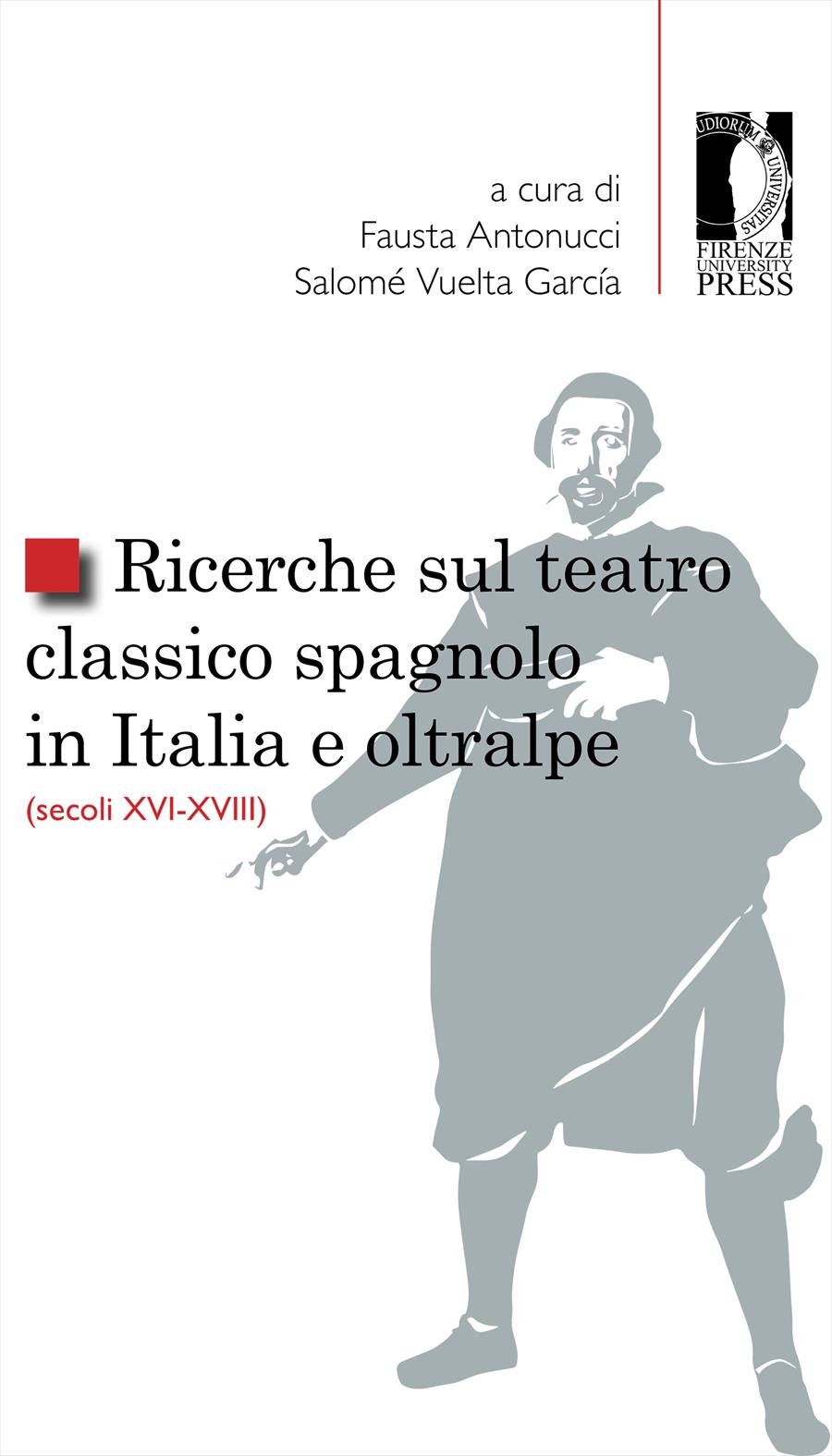- Ricerche sul teatro classico spagnolo in Italia e oltralpe (secoli XVI-XVIII)
- Edited by Fausta Antonucci, Salomé Vuelta García
«La forza del naturale tradotta dallo spagnolo»: su un’ignota riscrittura italiana de La fuerza del natural di Agustín Moreto e Jerónimo de Cáncer a Vienna
- Nicola Usula
- © 2020 Author(s) |
- CC BY 4.0
- DOI: 10.36253/978-88-5518-150-1.23
Among the manuscripts in Italian kept in the National Library of Vienna, a comedy in prose of Spanish derivation has recently come to light, hitherto neglected by theatrological and Hispanistic studies. The title page of the booklet declares at the beginning the nature of the content with a laconic "La forza del naturale translated from Spanish », which identifies the text as a translation and revision of La fuerza del natural by Agustín Moreto and Jerónimo de Cáncer (perhaps with the collaboration of Juan de Matos Fragoso), probably composed between 1644 and 1654 and printed for the first time in 1661. Where and when was written the text passed down by the Viennese witness? Was it imported from Italy or written beyond the Alps? Finally, is it possible to trace the exact hypotext starting from the twenty sources known today of the Spanish comedy? This study answers these questions and sheds light on the adaptation techniques that emerged from the comparison between the Italian text and its Spanish hypotext, also by taking into account the elements relating to music distributed throughout the comedy: dances, singing and musical instruments on stage.
- Keywords:
- Agustín Moreto,
- Jerónimo de Cáncer,
- La fuerza del natural,
- theatrical rewriting,
- Vienna,
Complutense University of Madrid, Spain - ORCID: 0000-0001-5531-7126
- Brown A. (2001a), “Galliard [gagliarda, gagiarda, gaiarda, gaillarde, gallarda]”, in Sadie S. (ed.), The New Grove Dictionary of Music and Musicians, 9, 2nd edition, Macmillan, London and New York: 449-451.
- Brown A. (2001b), “Pavan [pavane, paven, pavin]”, in Sadie S. (ed.) The New Grove Dictionary of Music and Musicians, 14, 2nd edition, Macmillan, London and New York: 311-314.
- Dizionario degli Accademici della Crusca (1697), “Quarto”, Valvasense, Venezia.
- Eineder G. (1960), The ancient paper-mills of the former Austro-hungarian empire and their watermarks, The Paper Publications Society, Hilversum.
- La forza del naturale, MS anonimo, Österreichische Nationalbibliothek, Sammlung von Handschriften und alten Drucken, Cod. 9955.
- Fusillo M. (1998), L’altro e lo stesso. Teoria e storia del doppio, La Nuova Italia, Scandicci.
- Moreto A. (2016), La fuerza del natural, García Reidy A. (ed.), in Moreto A., Segunda parte de comedias, V, Reichenberger, Kassel.
- Morley S. G. (1918), Studies in Spanish Dramatic Versification of the Siglo de Oro. Alarcón and Moreto, «University of California Publications in Modern Philology», 7, 486: 131-173.
- Noe A. (2001), Die Rezeption spanischer Dramen am Wiener Kaiserhof des 17. Jahrhunderts Versuch einer Bilanz, «Daphnis», 30: 159-218.
- Orlando F. (1994), Il dato di fatto falso: Tecnica teatrale e visione del mondo, in Carandini S. (a cura di), Il valore del falso. Errori, inganni, equivoci sulle scene europee in epoca barocca, Bulzoni, Roma: 27-37.
- Profeti M. G. (1994), «Esconderse el galán», «taparse la dama». Strategie dell’occultamento, strategie della scrittura nella commedia «de capa y espada», in Carandini S. (a cura di), Il valore del falso. Errori, inganni, equivoci sulle scene europee in ep
- Profeti M. G. (1996), Intertesto e contesto: Le gare dell’amore e dell’amicizia vs Duelo de honor y amistad, in Profeti M. G., Commedia aurea spagnola e pubblico italiano, vol. I, Materiali, variazioni, invenzioni, Alinea, Firenze: 121-138.
- Profeti M. G. (2000), Primero es la honra di Agustín Moreto con le musiche di Antonio Draghi, in Sala E., Daolmi D. (a cura di), «Quel novo Cario, quel divin Orfeo». Antonio Draghi da Rimini a Vienna. Atti del convegno internazionale (Rimini, Palazzo Buon
- Profeti M. G. (2009), Primero es la honra di Agustín Moreto a Vienna, in Profeti M. G., Commedia aurea spagnola e pubblico italiano, vol. VII, Commedie, riscritture, libretti: La Spagna e l’Europa, Alinea, Firenze: 203-228.
- Seifert H. (1985), Die Oper am Wiener Kaiserhof im 17. Jahrhundert, Schneider, Tutzing.
- Seifert H. (2014), Texte zur Musikdramatik im 17. und 18. Jahrhundert: Aufsätze und Vorträge, Hollitzer, Wien.
- Silbiger A. (2001), “Chaconne [chacony, ciaccona, ciacona, chacona]”, in Sadie S. (ed.), The New Grove Dictionary of Music and Musicians, 5, 2nd edition, Macmillan, London and New York: 410-415.
- Simmons J. S. G., van Ginneken-van de Kasteele B. (1994), Likhachev’s watermarks, an english-language version, The Paper Publications Society, Amsterdam.
- Sommer-Mathis A. (2000), Una fiesta teatral en la corte de Viena (1633): La representación de El vellocino de oro. El contexto histórico-cultural, in Profeti M. G. (a cura di), «Otro Lope no ha de haber» (Atti del convegno internazionale su Lope de Vega,
- Sommer-Mathis A. (2003), Momo e Truffaldino: i personaggi comici nelle due versioni del Pomo d’oro alla corte di Vienna (1668) e Madrid (1703), in Lattanzi A. et al. (a cura di), Commedia dell’arte e spettacolo in musica tra Sei- e Settecento, Turchini, N
- Strohm R. (1976), rec. Pagano R., e Bianchi L., Alessandro Scarlatti, Rostirolla G. (a cura di) Catalogo generale delle opere, ERI - Edizioni RAI Radiotelevisione Italiana, Torino 1972, «Rivista Italiana di Musicologia», 11/2: 314-328.
Chapter Information
Chapter Title
«La forza del naturale tradotta dallo spagnolo»: su un’ignota riscrittura italiana de La fuerza del natural di Agustín Moreto e Jerónimo de Cáncer a Vienna
Authors
Nicola Usula
Language
Italian
DOI
10.36253/978-88-5518-150-1.23
Peer Reviewed
Publication Year
2020
Copyright Information
© 2020 Author(s)
Content License
Metadata License
Bibliographic Information
Book Title
Ricerche sul teatro classico spagnolo in Italia e oltralpe (secoli XVI-XVIII)
Editors
Fausta Antonucci, Salomé Vuelta García
Peer Reviewed
Number of Pages
510
Publication Year
2020
Copyright Information
© 2020 Author(s)
Content License
Metadata License
Publisher Name
Firenze University Press
DOI
10.36253/978-88-5518-150-1
ISBN Print
978-88-5518-149-5
eISBN (pdf)
978-88-5518-150-1
eISBN (epub)
978-88-5518-151-8
Series Title
Studi e saggi
Series ISSN
2704-6478
Series E-ISSN
2704-5919
